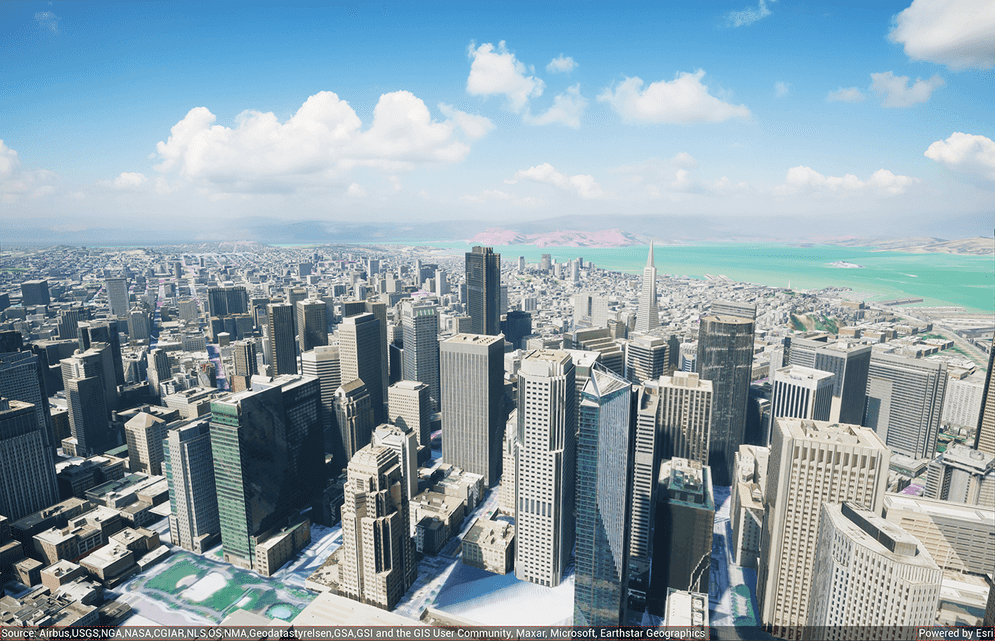Version 1.7.0 - November, 2024.
This page provides details about enhancements, deprecations, resolved issues, and known issues in the 1.7 release of ArcGIS Maps SDK for Unreal Engine.
Enhancements
This section describes new features and improvements (what's new).
Linux support
ArcGIS Maps SDK for Unreal Engine now supports Linux. The supported version is Ubuntu 22.04 LTS.

Attribution support
With this release, you can now display attribution details in your application. These details include descriptive information about the data sources used by the application next to the Powered by Esri text in all applications that use Esri technology. This includes applications that use any ArcGIS API, SDK, service, content, or data. Displaying the attribution is required for all applications that contain a map or do not contain a map. These requirements are outlined in detail in the Attribution topic.

Draw status support
Support for draw status is added with this release. Use this status to determine whether the content of a view is still drawing or drawing is complete. The drawing state of the view might change when zooming in or out, panning, or performing other actions that require the map to be redrawn.

C++ API
ArcGISevent has been added so that when theAttribution Changed Event ArcGISattributions has changed, a callback is triggered.View ArcGISenum value has been added to support different statuses of drawing in theDraw Status Geo.View ArcGISevent has been added so that when the draw status changes, a callback function can be triggered.Draw Status Changed Event Attributionproperty has been added underText ArcGIS.View Drawproperty has been added underStatus ArcGIS.View
Components
- ArcGISAttribution Component has been added for this release. To use it, simply add it to your Map Actor.
Plugin samples
-
The DisplayDrawStatus sample (DisplayDrawStatus.umap) is included as a plugin sample to demonstrate subscribing to the draw status changed event to display a loading spinner while layers in the map are drawing. The sample can be found in the directory indicated below.
Plugins/ArcGIS Maps SDK for Unreal Engine Content/Samples/
Deprecations
This section lists OS and framework deprecation information.
OS and framework deprecations
Issues resolved
There are no resolved issues with this release.
Known issues
-
BUG-000169958: Services cannot be loaded with the item URL if non-ASCII characters are in the service URL.
Summary: When there are non-ASCII characters in the service URL, the layer cannot be loaded by using the item URL.
Workaround: Use the service URL that is encoded in UTF-8.
-
BUG-000169959: On Zoom to Layer/Elevation, the editor camera is misaligned with the horizon.
Summary: After you click "Zoom to Layer" or "Zoom to Elevation" and then start and stop Play mode, the editor camera orientation is misaligned with the horizon.
Workaround: Reset the editor camera in the Pawn actor.
-
Question on Esri Community: Collider offsets in rendered OSM 3D buildings.
Summary: The collision mesh is not properly aligned with the corresponding rendered OSM 3D building, which can result in inaccurate collision detection or unexpected behavior when interacting with the 3D environment.
Workaround: No workaround available.
-
BUG-000164676: Exceptions not handled correctly in Blueprints.
Summary: Open the Blueprint sample scene, open the level blueprint, go to the "If the Map Type is Local" node, change the map type enum selector to Local, save and press play, Unreal crashes.
Workaround: Use the UI or C++.